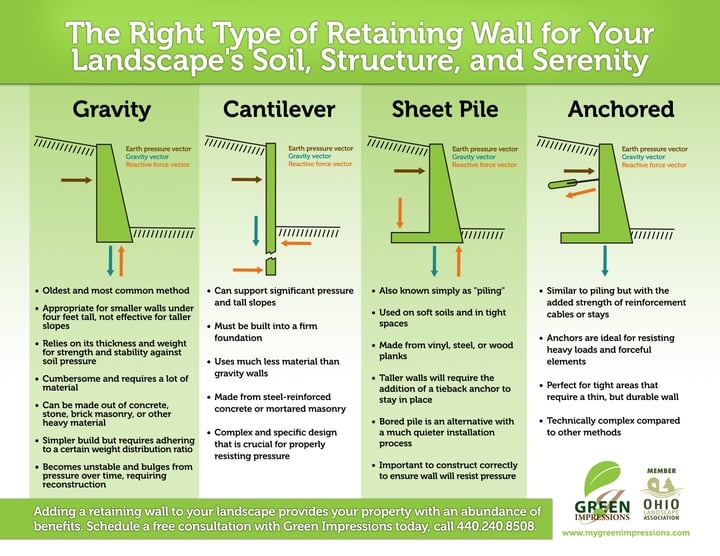When adding a retaining wall to your landscape, you have the choice between varying materials, design, and methods, but how can you ensure your investment holds up over time?
Each retaining wall is designed to provide form and function for your space, meeting particular architectural needs for shaping, sloping, and elevating the soil. However, they are also perfect for incorporating your personal style, adding dimension, texture, and aesthetic beauty to any area.
 Constructing an addition to your property requires time, money, and effort, so you want to avoid the hassle of a poorly built or structurally inappropriate feature in your space. Use this simple guide to determine the most ideal retaining wall for your particular landscape.
Constructing an addition to your property requires time, money, and effort, so you want to avoid the hassle of a poorly built or structurally inappropriate feature in your space. Use this simple guide to determine the most ideal retaining wall for your particular landscape.
Gravity
- Oldest and most common method
- Appropriate for smaller walls under four feet tall, not effective for taller slopes
- Relies on its thickness and weight for strength and stability against soil pressure
- Cumbersome and requires a lot of material
- Can be made out of concrete, stone, brick masonry, or other heavy material
- Simpler build but requires adhering to a certain weight distribution ratio
- Becomes unstable and bulges from pressure over time, requiring reconstruction
Cantilever
- Can support significant pressure and tall slopes
- Must be built into a firm foundation
- Uses much less material than gravity walls
- Made from steel-reinforced concrete or mortared masonry
- Complex and specific design that is crucial for properly resisting pressure
 Sheet Pile
Sheet Pile
- Also known simply as "piling"
- Used on soft soils and in tight spaces
- Made from vinyl, steel, or wood planks
- Taller walls will require the addition of a tieback anchor to stay in place
- Bored pile is an alternative with a much quieter installation process
- Important to construct correctly to ensure wall will resist pressure
Anchored
- Similar to piling but with the added strength of reinforcement cables or stays
- Anchors are ideal for resisting heavy loads and forceful elements
- Perfect for tight areas that require a thin, but durable wall
- Technically complex compared to other methods
Adding a retaining wall to your landscape provides your property with an abundance of benefits. Not only will you maintain your desired structure and foundation, but a retaining wall is a simple, functional way to add style and decor to your space.



